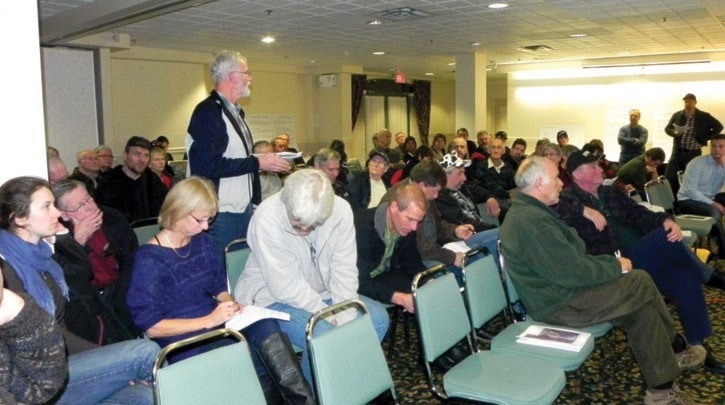There was "a lot of misunderstanding" at a recent meeting between the public and the Department of Fisheries and Oceans, says a local biologist.
The meeting was to discuss a recovery strategy for the endangered Salish sucker, which lives primarily in drainage ditches in the District of Kent. DFO officials held the meeting in Harrison Hot Springs two weeks ago, with about 60 people attending, including a large contingent from Kent council and staff.
Dr. Mike Pearson, who works closely with both the DFO and Agassiz area farmers, says that the confusion "stems from nobody doing this before."
A team of biologists created the document several years ago, and Pearson wrote the draft, independently from the DFO. They submitted the work in August of 2005, and it quickly got caught up in legal wrangling, Pearson says.
"It disappeared into the DFO for a couple of years," he told The Observer. "In 2007, they came out the strategy, published it on their website, but changed it without talking to the authors."
Several maps outlining another endangered species, the Nooksack Dace, had been removed.
"You don't just change people's work without talking to them," Pearson says.
In response, the DFO was taken to court by a coalition of environmental groups, including the David Suzuki Foundation and Sierra Legal.
"While that lawsuit was in progress, they sat on (the recovery strategy)," Pearson explains.
But the lawsuit has now been settled, and the public is finally seeing the document with the maps. While the Nooksack Dace isn't a huge concern in Agassiz, the Salish sucker certainly is — and for good reason.
"This is the first time in Canada that critical habitat has been identified on private land," Pearson says.
And it's not been identified on just any private land, but in strategically-built, purposeful drainage ditches.
DFO is the authority that decides how ditches are maintained, and as it stands, farmers are generally unhappy with the way that's being done. Deeming their land critical habitat threatens to add even more red tape and legality to the way they farm, they said at the recent meeting.
Pearson says this draft recovery plan, which had to be written to provide a "base line" for the needs of the Salish sucker, is the first document of two-document process.
"It's just a biological document, asking 'what does a fish need, what's threatening it,'" he says. "The next step is an action plan, 'what area we actually going to do?'"
Identifying the land as critical habitat does not mean larger legal riparian zones, he adds.
"We're not going to put 30 meters of buffer on every piece of land in the Valley," he says. They just needed to write an official document that sets out exactly how and why the Salish sucker is endangered, and have that listed with the DFO on their "legal list."
Any further action would come from the draft action plan.
"That document isn't written," Pearson says.
There is still time to provide feedback to the DFO on how the draft recovery strategy plan affects your land or livability, positively or negatively.
To do that, email sara@pac.dfo-mpo.gc.ca or fax 604-666-0417 by February 11.
To see the draft recovery plan, visit the DFO website and search for Draft Recovery Strategy for the Salish Sucker.
news@ahobserver.com
